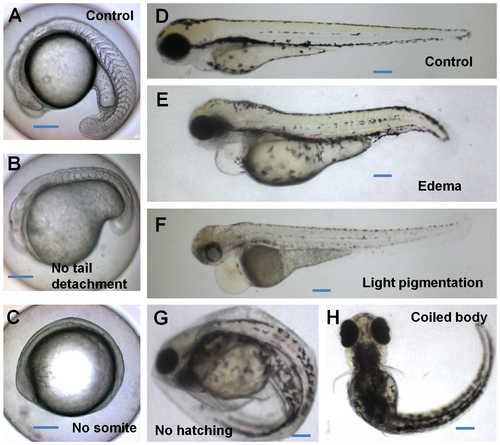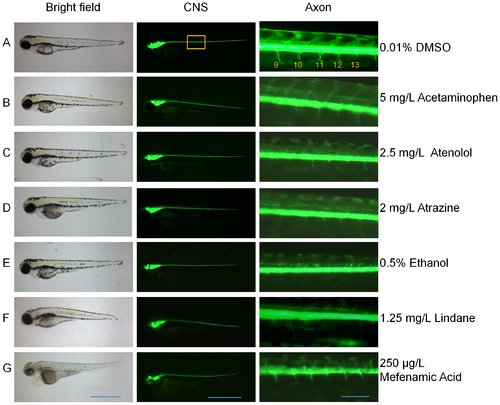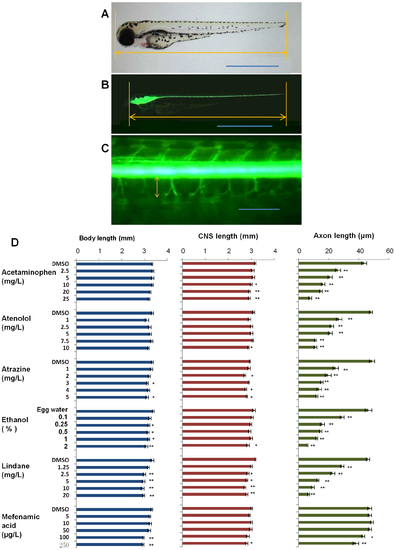- Title
-
Fluorescent Transgenic Zebrafish Tg(nkx2.2a:mEGFP) Provides a Highly Sensitive Monitoring Tool for Neurotoxins
- Authors
- Zhang, X., and Gong, Z.
- Source
- Full text @ PLoS One
|
Examples of abnormal phenotypes. (A, D) Normal developing control embyors/fry in o.01% DMSO at 24 hpf (A) and 72 hpf (D); (B) No tail detachment at 24 hpf in 20 mg/L acetaminophen; (C) No somite at 24 hpf in 25 mg/L acetaminophen; (E) Edema at 72 hpf in 20 mg/L lindane; (F) Light pigmentation at 72 hpf in 250 µg/L mefenamic acid; (G) No hatching at 72 hpf in 10 mg/L lindane; (H) Coiled body at 96 hpf in 5 mg/L lindane. Scale bars: 200 µm. |
|
General phenotypes (left row), GFP-expressing central nervous systems (middle row) and motoneuron axons (right row) of 80-hpf Tg(nkx2.2a:mEGFP) fry in the presence of effective concentrations of different chemicals. (A) 0.01% DMSO control, (B) 5 mg/L Acetaminophen, (C) 2.5 mg/L Atenolol, (D) 2 mg/L Atrazine, (E) 0.5% Ethanol, (F) 1.25 mg/L Lindane and (G) 250 µg/L Mefenamic acid. Somite numbers are indicated at the top right panel. Scale bars: 1000 µm for the left and middle rows and 100 µm for the right row. |
|
Body length, CNS length and axon length of Tg(nkx2.2a:mEGFP) fry in the presence of variable chemicals. (A–C) Examples of measurements of body length (A), CNS length (B) and axon length (C). The measured lengths are indicated by double arrow lines. Scale bars: 1000 µm in (A.B) and 100 µm in (C). (D) Histograms of body length, CNS length and axon length. Chemical names and concentrations are indicated on the left. Statistical significance: **P<0.01; *P<0.05. |



